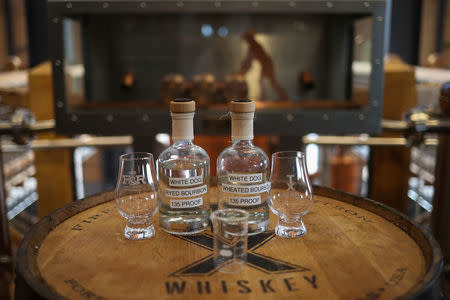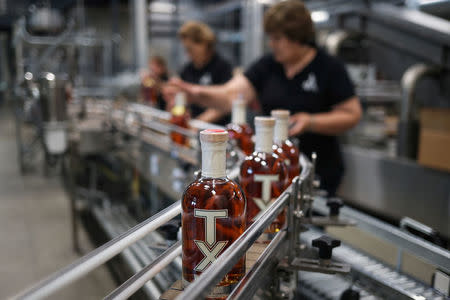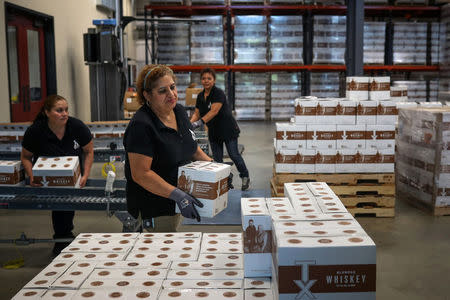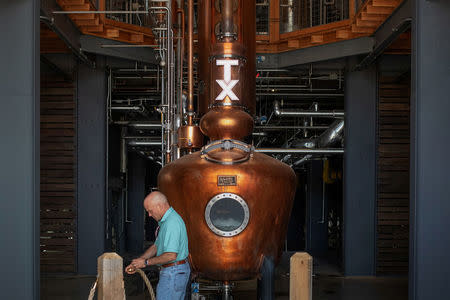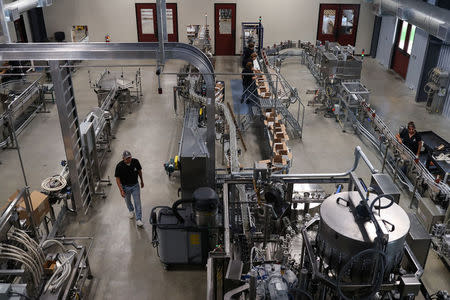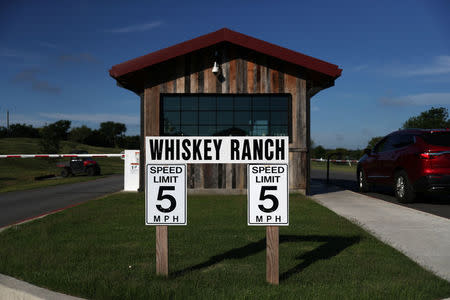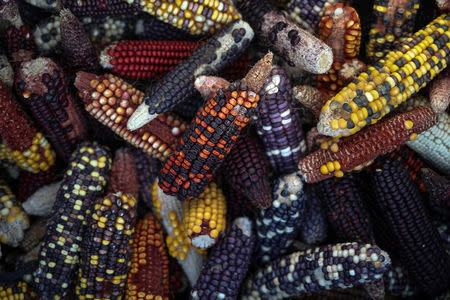Fields of dreams: Texas researchers seek to redefine U.S. whiskey
By Jon Herskovitz
COLLEGE STATION, Texas (Reuters) - A master distiller and a crop scientist who specializes in corn breeding are working on a project they hope one day will make whiskey drinkers think of Texas in the same way as lovers of American wine think of California.
Seth Murray, a top corn breeder at Texas A&M University, and Rob Arnold, who is working on a doctorate at the school while making whiskey for a Fort Worth distiller, are trying to develop unique and commercially viable strains of corn that will bring distinct tastes to whiskey.
The project could change whiskey production by providing new types of corn, reshaping the industry's reliance on grain not specifically bred for making into spirits.
The idea is to develop strains of corn to make whiskeys with unique and identifiable flavors, in the same way as specific grapes define the taste of, say, a Sonoma Valley zinfandel or a Bordeaux produced in southwest France.
"Nobody has ever done that before," said Murray, an associate professor at Texas A&M's Department of Soil and Crop Science, who is running the project.
At present, most major American distillers make their whiskeys with similar types of yellow corn grown from seeds developed in the U.S. Midwest and designed to produce high yields.
"We were missing all the unique flavors that can live in corn varieties," Arnold said.
In 2017, over 23 million nine-liter cases of American whiskey were sold in the United States, generating over $3.4 billion in revenue for distillers, according to industry group the Distilled Spirits Council.
Bourbon is one of the most popular kinds of American whiskey. Stored in charred oak barrels, bourbon is made from a grain mash that is at least 51 percent corn, though most brands are about 70 to 80 percent. Other types of whiskey also use corn as a main ingredient in the mash.
With similar strains of corn used in most mass-produced bourbons, most brands derive their distinct flavor from yeasts used in fermentation and barrels where the spirits age. Kentucky bourbon producers also like to say the limestone-filtered water in the region is a key to their products' taste.
Murray and Arnold want to go a step further. They are mixing and matching corn varieties from Latin America and heirloom varieties from North America, none of which has been genetically modified.
As well as coming up with strains that are commercially viable to grow in Texas, the researchers are attempting to capture the locale's terroir, or the characteristic taste of its water, soil, and climate.
Some small batch producers and even major distillers have already tried making whiskey from heirloom corns, grown from seeds of varieties that appeared generations ago.
But Murray said that while the heirlooms can produce interesting taste compounds, yields on the older varieties can be about an eighth of a modern hybrid, calling into question their commercial potential.
EXPERIMENTAL FIELDS
With about 7,000 maize varieties available at Texas A&M, the researchers have a multitude of possibilities that extend far beyond the state. A type of corn developed for Texas may produce buttery roasted notes in bourbon, for example, but a strain developed for Colorado may bring a bold smoky taste.
So far, Arnold and Murray have produced about 50 small-batch test products. Soon they will plant thousands of seeds on a commercial farm as they ramp up production.
At the experimental field, Murray and graduate students conduct thousands of pollinations by hand and fly drones overhead to monitor crops destined for the distillery.
Arnold sees the research as a game changer, much like the way the wine producers in the Napa region of California honed their local craft to take on Old World producers in France and elsewhere.
With 95 percent of the world's supply of bourbon made in Kentucky, Arnold said it is producers in the Bluegrass State that he would like to "beat at their own game."
Working at distillery Firestone & Robertson, which bills itself as the biggest whiskey distiller west of the Mississippi, Arnold has a lab to test for tastes and the patience that comes from being a distiller, where his commercial products sit in barrels for at least four years.
If the project proves successful, it might not be until the middle of the next decade that it will produce a commercial whiskey.
"'Soon' in the whiskey world is kind of relative. Everything for us is years and years down the road," he said.
(Additional reporting by Alan Devall; editing by Frank McGurty and Rosalba O'Brien)
